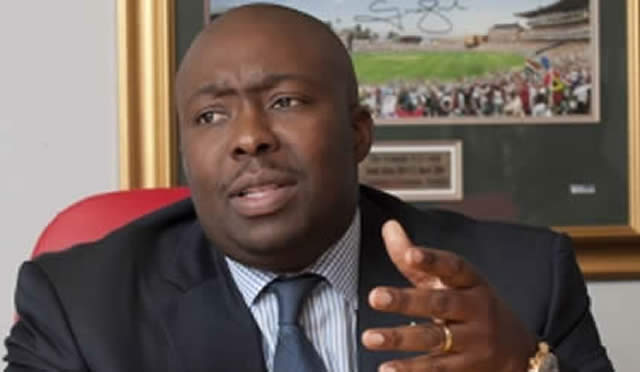Colour theory, meaning
Knowledge Mushohwe Art Zone
Graphic design, like any other form of art, reflects society and its colour usage is tied to how its targeted audience interprets meaning. Colour meaning is well grounded in theories. Wassily Kandinsky, a prominent post-modernism abstract painter widely regarded as a pioneer art theorist, attached several meanings to various colour themes that are still relevant today.
For instance, he found the colour yellow to be exuding warm, exciting and happy emotions. Its sheer brightness can be seen as a source of excitement that communicates blissful feelings. The colour is associated with the sun which appears yellow during the day. In South Africa, one of the country’s mobile communication firms, MTN, uses yellow as a tool to generate excitement among its subscribers.
As a result of the deliberate marketing tool, their famous ‘Ayoba’ adverts during the 2010 World Cup were bright and cheerful, and consequently relatable. Yellow is also extremely bright and hard to miss. Many newspapers today use yellow on banners and billboards as a way of attracting attention. Its downside is that it is too bright and makes it difficult for the eye to take in if overused or employed irresponsibly.
Kandinsky identified blue as a deep, peaceful and supernatural colour. Blue is the colour of the sky and many attach it to water bodies. It is serene and has little attraction powers because of its somewhat gloomy appearance. Blue is used dominantly by organisations that are in the ‘water business’, including zinwa, irrigation pumps traders and swimming teams.
The farming communities use green, a colour Kandinsky attached to stillness, peace and nature. In Zimbabwe most organisations that have a thing or two to do with agriculture use the colour. They include Agribank and the main seed producing companies. zanu-pf has in recent years used green more than any of its other colours to emphasise the central message of their manifesto.
The catch phrase ‘The land is the economy, the economy is land’, has been aptly punctuated by the colour green in communicative material produced by the party. White, according to Kandinsky, symbolises harmony, silence, cleanliness. Additionally, white is thought to be an aid to mental clarity and evokes purity of thoughts or actions.
In graphic design, white is considered negative space.
Because most design products are printed on white material, any space left unused or filled with the colour represents a break from visuals and text. If used intelligently, white enables a graphic designer to arrange components of a composition within the context of the information presented.
However, reckless use of the colour eats up the positive space and reduces the relevance of the graphic. Black was considered by Kandinsky to represent grief, dark and the unknown. In society, black symbolises authority, power and grief. Politicians and mourners wear black because of its symbolic nature. The effects of the colour include inducing an inconspicuous feeling or a restful emptiness.
Black does evoke strong emotions and too much of it in graphic design may be overwhelming to the viewer. Perhaps the most frequently used colour in graphic design is red. Kandinsky says red evokes strong feelings because it exhibits glow, confidence and existence. The most emotionally intense colour, red has the ability to stimulate a faster heartbeat and breathing. It is also the colour of love and Valentine’s Day informationals are flooded with the colour. Unfortunately, red cars are popular targets for thieves because of the attraction the colour presents.
In Zimbabwe, red is commonly used in newspaper adverts as a way of attracting attention. It is so loud and all too visible that it is impossible to miss. Mobile communication firms all over the world, including in Zimbabwe, are always keen to attach their brands to red because of its effervescence and stimulating effects.
Controlled use of red ensures that a graphic design product directs the viewer’s eye to specific areas or navigates the targeted audience through in a specific direction.
Orange symbolises radiance, healthiness, seriousness. It may not be as bright as red but bright enough to always get the attention of the viewer. Orange is widely regarded as the colour that stimulates activity, as well as appetite. It also encourages socialisation. It, however, is a controversial colour choice. There is usually strong positive or negative association to orange and true orange generally elicits strong emotions on either side.
Fun and flamboyant orange radiates warmth and energy and in Zimbabwe, one mobile communication company uses it as one of two corporate colours. Orange is used in graphic design but mostly in tandem with another colour. Interestingly, some of the orange tones such as terra cotta, peach or rust have very broad appeal.
Brown is a representation of stability, reliability, and approachability. It is sometimes known as the ‘earth colour’ because it is associated with all things natural or organic. It is neither too dark nor bright and its use as the sole colour in graphic design may be off putting. However, a monochromatic colour use involving the employment of different shades of brown gives desirable results aesthetically.
Brown offers a feeling of wholesomeness and stability. It is closely related to nature, therefore connects with the earth and gives a sense of orderliness. Each colour has it own attachment to society. But the use of colour in graphic design is not a simple matter of telling the viewer about what it represents. Colour use is a balance between helping to accentuate the graphic’s meaning and creating a product that is as easily accessible and as painless to read as possible.




Comments